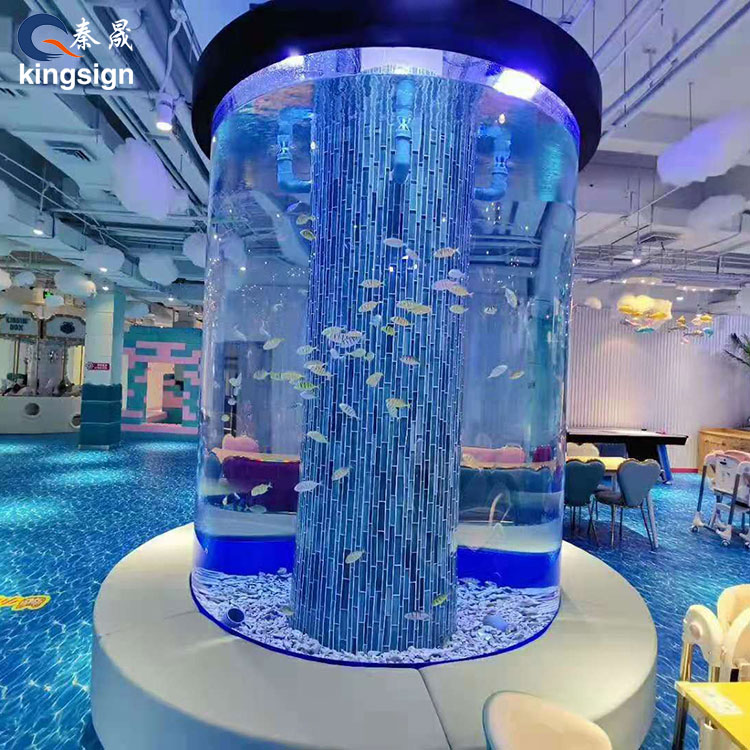Navigating Challenges: Considerations for Aquarium Cylinder Owners
2024-03-28
Owning an aquarium cylinder is an exciting venture into the captivating world of aquatics, offering a unique and elegant display of underwater life. However, like any hobby, it comes with its own set of challenges and drawbacks that prospective owners should consider. In this blog post, we'll explore some potential challenges and drawbacks of owning an aquarium cylinder, providing insights to help enthusiasts make informed decisions before diving in.
1. Limited Surface Area:
One of the primary challenges of owning an aquarium cylinder is the limited surface area compared to traditional rectangular or square tanks. The cylindrical shape reduces the available surface area for gas exchange, which can lead to decreased oxygen levels and increased carbon dioxide buildup in the water. This limitation may require careful attention to water circulation and aeration to maintain optimal conditions for aquatic inhabitants.
2. Distorted Viewing Angles:
While aquarium cylinders offer panoramic views from all angles, the curved walls of the tank can sometimes distort the viewing experience, especially when viewed from the sides. Objects and fish may appear distorted or magnified, making it challenging to appreciate their true size and proportions. This distortion can be mitigated by positioning viewing areas directly in front of the tank for optimal viewing.
3. Limited Aquascaping Options:
The cylindrical shape of aquarium cylinders may limit aquascaping options compared to traditional tanks. It can be challenging to create complex landscapes or incorporate certain hardscape elements such as large rocks or driftwood due to space constraints and the curvature of the tank walls. Aquascaping in a cylindrical tank requires careful planning and consideration of the tank's unique dimensions and layout.
4. Maintenance Challenges:
Maintaining water quality and performing routine maintenance tasks can be more challenging in an aquarium cylinder compared to traditional tanks. The curved walls and tight spaces may make it difficult to access certain areas for cleaning and maintenance, such as the substrate or hard-to-reach corners. Additionally, filtration systems may need to be customized or adapted to fit within the cylindrical tank, requiring careful planning and installation.
5. Specialized Equipment Requirements:
Aquarium cylinders may require specialized equipment and accessories tailored to their unique shape and dimensions. Filters, lighting fixtures, and other equipment may need to be custom-designed or modified to fit properly within the tank. This can increase initial setup costs and limit options for equipment upgrades or replacements in the future.
6. Limited Stocking Options:
The cylindrical shape of aquariums can influence the types and quantities of aquatic inhabitants that can be kept in the tank. Some fish species may prefer swimming space provided by traditional rectangular tanks, while others may adapt well to the cylindrical environment. Careful consideration should be given to the compatibility and suitability of fish and other aquatic inhabitants for the tank's dimensions and layout.
Conclusion:
In conclusion, owning an aquarium cylinder offers a unique and visually stunning way to showcase underwater life. However, it's important to be aware of the potential challenges and drawbacks associated with cylindrical tanks, such as limited surface area, distorted viewing angles, aquascaping limitations, maintenance challenges, specialized equipment requirements, and limited stocking options. By understanding these factors and planning accordingly, enthusiasts can overcome challenges and enjoy the beauty and wonder of their aquarium cylinder to the fullest.



